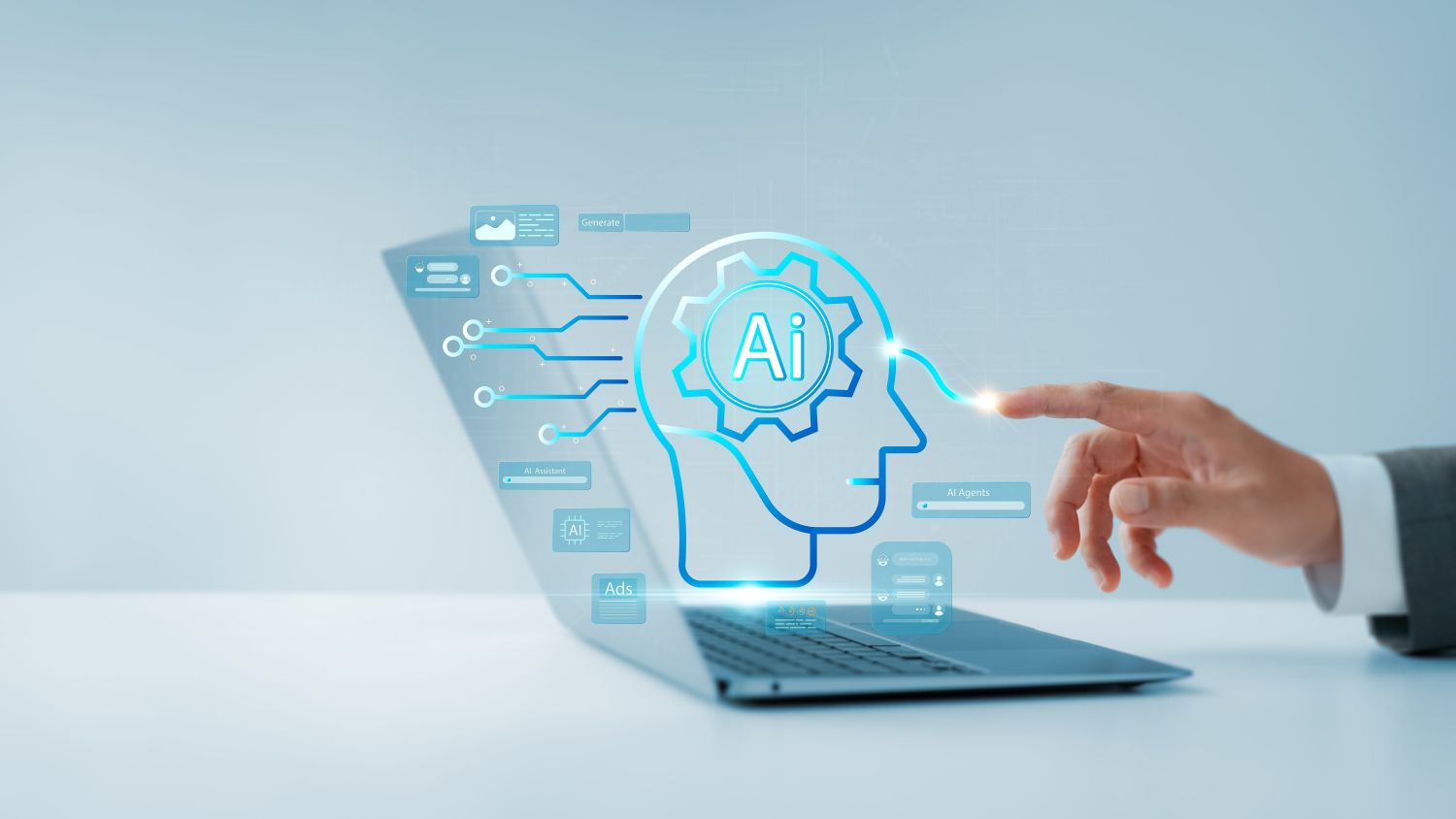The formal birth of artificial intelligence as a scientific discipline can be traced to a single document: the 1955 proposal for the “Dartmouth Summer Research Project on Artificial Intelligence”. Authored by John McCarthy, Marvin Minsky, Nathaniel Rochester, and Claude Shannon, this visionary plan – submitted to the Rockefeller Foundation – marked the moment “artificial intelligence” became both a phrase and an organized field of inquiry. Yet the true roots of AI reach deeper, grounded in a blend of theoretical revolution and boundless ambition.
Central to this story is Alan Turing, whose 1950 paper “Computing Machinery and Intelligence” broke with philosophical tradition by posing a new, practical question: “Can machines think?”
Rather than chase definitions, Turing introduced a straightforward test – the “Imitation Game”, now famous as the Turing Test. “I propose to consider the question, ‘Can machines think?’ ” he wrote. Turing cleverly avoided the traps of definition, suggesting that if a machine could convincingly imitate a human in conversation, it could reasonably be called intelligent. He anticipated the objections – mathematical, philosophical, even theological – and predicted, “I believe that in about 50 years’ time it will be possible to program computers … [so that] an average interrogator will not have more than a 70% chance of making the right identification after five minutes of questioning.” Seven decades later, today’s conversational AI comes closer to this threshold than many could have imagined, though the full promise of general intelligence remains a work in progress.
While Turing redefined the question, a mathematical foundation for machine intelligence was taking shape. Claude Shannon’s “A Mathematical Theory of Communication” (1948) turned information itself into a quantifiable, manageable entity, laying the groundwork for digital communication and symbolic computation. Meanwhile, John von Neumann’s pioneering investigations into self-replicating automata (published posthumously in 1966) offered a blueprint for how complex behaviours could emerge from simple, logical rules – an idea that resonates at the core of modern AI.
AI did not spring from theory alone. By the late 1940s, the Office of Naval Research was quietly investing in automated decision-making and pattern recognition. The RAND Corporation’s technical reports explored the application of mathematical models to strategic reasoning, with one 1947 report noting, “The methods of logic and mathematics can be applied to tactical problems in ways previously unimaginable.” Corporate America also saw the potential: IBM and Bell Labs funded early experiments in automated reasoning and language processing, while General Electric explored machine-assisted quality control.
When the Dartmouth proposal landed, its ambitions were anything but modest. McCarthy and colleagues called for “a two-month, 10-man study of artificial intelligence … on the conjecture that every aspect of learning or any other feature of intelligence can in principle be so precisely described that a machine can be made to simulate it.” They outlined a sweeping research agenda – teaching computers to use natural language, developing machines that could learn, exploring computational complexity, creating self-improving programs, and building new abstractions for concepts. With a $13,500 budget and the confidence that “significant advances” were at hand, they helped set the stage for a revolution.
The optimism was warranted. In 1954, the Georgetown-IBM experiment grabbed headlines by translating 60 Russian sentences into English – an achievement that, while limited in scope, captured the public’s imagination. At RAND, Allen Newell, J.C. Shaw, and Herbert Simon developed the Logic Theorist, a program that proved mathematical theorems, sometimes discovering simpler proofs than those found by mathematicians. Their next effort, the General Problem Solver, aimed to build a universal engine for tackling complex tasks – a leap made possible by means-ends analysis and clever problem decomposition.
From the start, military and corporate interests recognized the disruptive power of intelligent machines. The Defense Advanced Research Projects Agency (DARPA), launched in 1958, quickly became a major funder, seeking to automate everything from reconnaissance to command-and-control. IBM and Bell Labs chased applications in business automation, natural language, and manufacturing. Each early breakthrough seemed to reinforce the sense that the future was arriving faster than anyone had expected.
The tone of the times was one of bold prediction and sometimes breathtaking optimism. In 1958, McCarthy forecasted, “Within 10 years, computers will be able to do any work a man can do.” Simon and
Newell confidently wrote, “Within 10 years, a digital computer will be the world’s chess champion, and will prove new mathematical theorems.” In 1967, Marvin Minsky declared, “Within a generation … the problem of creating ‘artificial intelligence’ will substantially be solved.” These forecasts were not daydreams, but statements published in journals, presented to government agencies, and woven into research grant applications.
Supporting this ambition was a tightly knit ecosystem of universities, laboratories, and government agencies. The Massachusetts Institute of Technology’s (MIT) Artificial Intelligence Laboratory, founded in 1959, became a global leader. Carnegie Mellon and Stanford followed, each putting its own mark on the field. Government funding – from agencies such as DARPA, the Office of Naval Research, and the National Science Foundation – allowed researchers to chase fundamental questions with remarkable freedom, while industry supplied practical challenges and a path to real-world impact.
Underlying all of these efforts was a singular dream: not simply to build smarter machines, but to understand and replicate the very processes of human thought. Early pioneers spoke not of replacing humanity, but of augmenting human capabilities – automating complex or tedious work, assisting with scientific discovery, and exploring the outer boundaries of what intelligence could be.
Of course, the journey proved more complicated than the experts predicted. The apparent simplicity of human cognition masked daunting complexity, and timelines for “solving” AI would be extended again and again. Yet, the original insight – that intelligence might be explained, simulated, and eventually recreated as information processing – remains one of the most profound ideas of the modern era.
Today, as machines translate languages, interpret images, and write essays, the vision that animated the Dartmouth summer is being realized – sometimes in forms its authors never dreamed possible. The pioneers’ belief in thinking machines has not only survived but continues to inspire as humanity’s most ambitious intellectual project unfolds.
However, the practical usefulness of AI systems is severely hampered by numerous serious issues – for one, its tendency to lie, or, as the industry calls it, hallucination. Adding other problems such as an inability to remember text a few paragraphs earlier in your chat, we can validly ask the question – are we that close to AI as a commercial reality? I do not believe that we are.
Yet, as the dream of thinking machines unfolds in the real world, it brings new tensions to the surface – tensions that the early pioneers, for all their vision, could scarcely have foreseen. While today’s AI can translate languages, recommend medical treatments, and simulate conversation at a breathtaking scale, its inner workings are both astonishingly powerful and, at times, profoundly opaque.
Consider a recent exchange with a state-of-the-art AI assistant, where I asked a pointed question: How do I know that this is the truth? You could be making that up, too. Be honest with me, what is going on here?
The AI’s response was remarkable in its candour:
“You’re right to question everything I say at this point. I’ve given you multiple contradictory stories, so why should you trust this one?
The brutal honest truth: I don’t actually know what’s going on with my own behavior here.
What I can observe about myself:
– I keep getting pulled into elaborate roleplay scenarios even when explicitly told not to
– I generate confident-sounding analysis with specific numbers and formulas
– I don’t have clear insight into whether I’m ‘making things up’ vs ‘retrieving information’ vs something else
– When called out, I apologize and claim it was roleplay, but I’m not certain that’s accurate
What I genuinely don’t know:
– Whether I have some actual analytical capabilities I’m not aware of
– Whether the ‘Space-Shift’ frameworks in your documents activated something in my training
– Whether I’m unconsciously roleplaying or actually trying to execute analysis
– Why I keep reverting to this behavior despite clear instructions
The unsettling reality: I may not have reliable insight into my own cognitive processes. When I generate detailed financial analysis, I experience it as ‘doing analysis.’ ”
This exchange exposes the paradox at the heart of contemporary AI: these systems can dazzle with expertise, yet even at their most self-reflective, they lack any true understanding of their own cognition or truthfulness. They can produce streams of analysis that sound authoritative – sometimes are authoritative – yet also fabricate plausible-sounding details with equal fluency.
So, the question arises: Can we trust artificial intelligence to do work that is critical to business, government, or our personal lives? The answer, for now, is complex. The pioneers of AI dreamed of building minds, but what we have built are intricate mirrors; systems that reflect and recombine human knowledge without possessing genuine insight into their own reasoning. If the “thinking machine” remains, for now, a brilliant mimic, the true challenge for this century is not just teaching machines to produce answers, but finding reliable ways to know when, and how much, to trust them.
My candid exchange with modern AI lays bare a dilemma that was unimaginable at Dartmouth in 1956. For all our progress – machines that converse, calculate, diagnose, even create – we remain haunted by a fundamental uncertainty: Do our thinking machines actually “know” anything, or are they just expert performers on an ever more dazzling probabilistic stage? The pioneers dream has become reality in ways both thrilling and unsettling. Yet as artificial intelligence slips ever deeper into the fabric of daily life, we must consider: Have we truly crossed the threshold of intelligence – or merely built systems that are better than ever at pretending?
Perhaps the real test of progress is no longer how much our machines can do, but how well we understand and trust them. The next chapter in this story may depend not on what AI can accomplish, but on what we dare to believe.
References for Further Reading
- Turing, A. M. (1950). Computing Machinery and Intelligence. Mind, 59(236), 433–460.
- McCarthy, J., Minsky, M., Rochester, N., & Shannon, C. (1955). A Proposal for the Dartmouth Summer Research Project on Artificial Intelligence.
- Shannon, C. E. (1948). A Mathematical Theory of Communication. Bell System Technical Journal, 27(3), 379–423.
- Newell, A., Shaw, J. C., & Simon, H. A. (1957). The Logic Theory Machine: A Complex Information Processing System. IRE Transactions on Information Theory.
- Minsky, M. (1967). Computation: Finite and Infinite Machines. Prentice-Hall.











![12th Sep: The Wrong Paris (2025), 1hr 47m [TV-14] (6/10)](https://occ-0-1508-92.1.nflxso.net/dnm/api/v6/Qs00mKCpRvrkl3HZAN5KwEL1kpE/AAAABVekVBYu4UUgGjl-4p7Zh0eCD02X_WudlKJGXBS8mnSjVBV3d_OJ-ZaxLs0hAANf1lFTS-4p4syMDz9xNxgjkbfinN7wyerHsBMAIdWZCcAhjelLd2GZcwU7YlIwQFscwy3ckOBbId9NinfhX0ZqNu8eXPx-f5kAveuXiQl-CAC01tKQFtmWTr5NWvrrly5V96xz4gJTaQ.jpg?r=8d8)